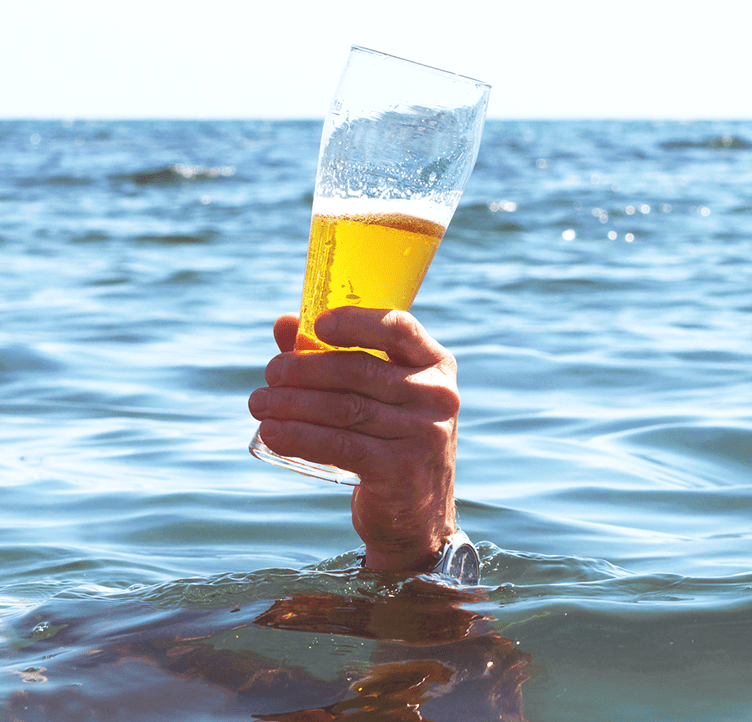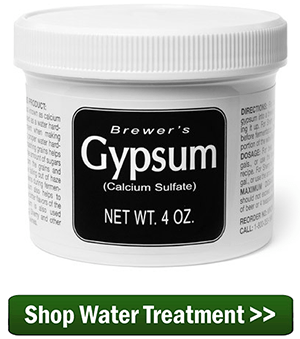 In home brewing, water chemistry can have a huge impact on beer flavor and quality. For one, it has to be clean and free of microbiological contamination. That’s a given to prevent spoilage. But in addition to that, the concentration of minerals in your brewing water can impact not only flavor, but also mash performance, acidity, hop bitterness, yeast health, body, mouthfeel, and other factors. For these reasons, many home brewers pay fierce attention to the chemistry profile of the water they use for brewing.
In home brewing, water chemistry can have a huge impact on beer flavor and quality. For one, it has to be clean and free of microbiological contamination. That’s a given to prevent spoilage. But in addition to that, the concentration of minerals in your brewing water can impact not only flavor, but also mash performance, acidity, hop bitterness, yeast health, body, mouthfeel, and other factors. For these reasons, many home brewers pay fierce attention to the chemistry profile of the water they use for brewing.
When looking at the brewing water chemistry, brewers pay attention to the following minerals:
- Calcium – Lowers pH and helps with mash conversion.
- Magnesium – Lowers pH and aids yeast health.
- Sodium – Sodium can help give beer body, but too much might make a beer taste salty.
- Carbonate/Bicarbonate – These can slow the mashing process and make hop flavors taste harsh.
- Sulfate – Sulfate can introduce harsh, dry flavors.
- Chloride – May contribute sweetness.
Water Chemistry for Mashing
One of the many ways water chemistry comes into play in home brewing is with the mashing process. This is particularly important for all-grain brewers, but also partial mash brewers. The enzymes in malt need certain conditions in order to covert starches into sugars. One of the primary factors is pH, or acidity. The enzymes work best when working within a specific pH range. Pure water has a pH of about 7, whereas ideal conditions for enzyme activity is about 5.4-5.5. Certain malted barleys can lower pH more than others. Depending on the source water, it may be necessary to add mineral salts to raise or lower the brewing water’s pH for a given beer recipe.
Water Chemistry for Brewing Certain Styles
 Some styles of beer were developed based on the local water profiles of the breweries that made them. To recreate a Munich Dunkel or English Bitter, it may be necessary to replicate the brewing water chemistry of those locations.
Some styles of beer were developed based on the local water profiles of the breweries that made them. To recreate a Munich Dunkel or English Bitter, it may be necessary to replicate the brewing water chemistry of those locations.
Brewing water chemistry analysis and profiles for specific locations is widely available from books such as Homebrewing for Dummies, Designing Great Beers, and others.
So How Can Brewers Change Their Water?
Before making changes to your brewing water, it’s very important to establish a starting point, otherwise you’re just shooting in the dark. Consider checking with your local homebrew club. Someone may have already figured out the mineral content of your local water source and offer some recommendations for how to adjust your water, if at all. You can also check with the local water department for a water quality report. Another option is to use only reverse osmosis or distilled water, in which case you’re essentially starting from pure H2O. This would be the purist way of handling your brewing water chemistry.
 Once you’ve established a baseline, you can add minerals to adjust your water profile. There may be a balancing act between maintaining an appropriate pH level and replicating the water of a particular region. Once the concentration of the minerals listed above are established, a brewer can use the following to make adjustments:
Once you’ve established a baseline, you can add minerals to adjust your water profile. There may be a balancing act between maintaining an appropriate pH level and replicating the water of a particular region. Once the concentration of the minerals listed above are established, a brewer can use the following to make adjustments:
- Gypsum – Gypsum adds calcium sulfate, which lowers pH. 1 teaspoon per five gallons adds 140 ppm of sulfate and 60 ppm of calcium.
- Calcium Carbonate – Calcium carbonate raises pH. For every teaspoon added to 5 gallons of water, it adds about 60 ppm of carbonate and 36 ppm of calcium.
- Magnesium Sulfate – As the name suggest, magnesium sulfate adds both magnesium and sulfate. 1 teaspoon in five gallons will increase sulfate by 100 ppm and magnesium by 25 ppm.
- Table Salt – Table salt contributes sodium and chloride. 1 teaspoon adds 170 ppm of chloride and 110 ppm of sodium.
*Source on ppm data: Homebrewing for Dummies
With these four ingredients, you can manage mash pH and effectively match any global water profile you want.
Though the calculations can certainly be made by hand, there are some water chemistry calculators which can help you determine how much of each to add to reach a certain water profile. BeerSmith is a software program for brewers with water calculations built in. Brewers Friend has a water chemistry calculator. Bru’n Water offers a water chemistry spreadsheet that will help you make adjustments.
 Conclusion
Conclusion
Before adjusting your brewing water chemistry, it’s important to know what you’re starting with. To start with a blank slate, use reverse osmosis or distilled water. Otherwise, contact your local water department a water analysis or profile or ask your local homebrew club for help. If those resources aren’t available to you, there are also water testing kits that can help you determine the mineral content of your water. Start paying attention to the mineral content of your water and pay attention to its effects on mash efficiency, yeast performance, and flavor. This is this essence of brewing water chemistry.
—–
David Ackley is a beer writer, brewer, and self-described “craft beer crusader.” He holds a General Certificate in Brewing from the Institute of Brewing and Distilling and is founder of the Local Beer Blog.

is there some where that I can send a sample of my water to so I can see just what is in it ?
Bill, if your water comes from a municipality all you need to do is contact the water department for their latest analysis report. If you are on another source, you can send the water off to a lab. The link below is one lab that is catering to homebrewers:
Ward Labs
https://producers.wardlab.com/BrewersKitOrder.php
I am using well water. It has been tested pure. I use it in wine and beer making. I don’t know if it could affect the taste or not. Everyone loves my wine and beer so I guess things are not too bad.
I am surprised you do not mention calcium chloride in your list of ingredients.